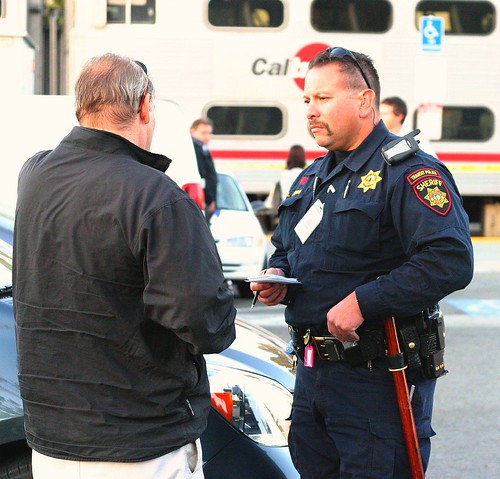Last week’s episode of the Freakonomics Podcast discussed the “perfect crime.” Stephen Dubner examines the best way to kill somebody and get away with it.
His shocking discovery? Do it with your car. You’re all so surprised, right?

Dubner’s podcast touches many of the themes so familiar to advocates of active transportation. Namely:
- Homicide by car is very rarely punished as a crime.
- American legal system makes vehicular manslaughter prosecution very difficult.
- “It’s just an accident.”
- Comparing accidental shootings (or other random stupidity — see Strava) with accidental traffic deaths. Anything else is heavily prosecuted. Traffic “accidents” are ignored by the justice system.
- The dehumanization of anybody who doesn’t drive a car. The only people who matter are people who drive autos.
- Pedestrians are overrepresented in traffic fatalities.
- According to police reports, it’s the pedestrians’ fault, because they’re doing something wrong. Get off the road!
- We don’t really know who’s at fault because the only witness is the surviving driver. Responding officer hears only one side of the story. See also Single Witness Suicide Swerve.
- Oh that poor, traumatized, innocent driver who was just minding her own business when *wham* that pedestrian came out of nowhere to ruin her day!
- Is the death penalty really warranted if a pedestrian does something wrong?
- Who are the roads for?
- “We reduce pedestrian fatalities by putting them in cars. The pedestrian fatality rate has fallen because we don’t have as many pedestrians anymore.” Get off the road!
- Areas with high pedestrian and cyclist deaths “focus on improving traffic flow by making the roads wider, straight, and faster with the assumption that it’s safer. They apply Interstate freeway design guidelines — which are very safe because they are controlled access — and apply them to city streets and suburban streets. They create these arterial roads which turn out to be the most dangerous roads both for drivers and pedestrians.” Listen up, Santa Clara County Roads Department!
- People don’t ask who roads are designed for. “People don’t ask it because we think we know what roads are designed for. It’s for cars, of course.” But if you ask people 100 years ago what streets are for, you’d hear different answers. None of them would have said streets are for cars, although there were a lot of cars then.
- Facilities designed for bikes and pedestrians in Europe are not “just random actions” but a deliberate result of policies.
- Europeans put an equal or even greater emphasis in their street design and policies on bike safety and public transit than on automobile transportation.
- Europeans are not bashful at trying innovative strategies to improve pedestrian and bike safety. American traffic engineers are much more conservative.
- Heavy media coverage of fatalities from freak occurrences followed up by demands to improve safety, but little mention of the 4,000 pedestrians killed annually by cars in the USA and no similar outrage to improve pedestrian safety. Why is that cost in lives so accepted?
- “If we had 4000 people die each year in airplane crashes, something would be done.”
- Shared space vs separated infrastructure.
- 25% of trauma admissions at a hospital in NYC are bicyclists, another 25% are pedestrians. To close out the podcast, the interviewed trauma surgeon suggests — only half jokingly — helmets for pedestrians. Yes, really.
I’ve highlighted the important points, but it’s worthwhile to invest a half hour listening to this podcast. There’s a lot of good stuff.
I’ve looked before how this “perfect crime” scenario has been been used in television crime dramas. In the Psych episode “High Top Fade Out“, the murder victim of the week is a bike commuter. His homicide is initially dismissed by police as a hit-and-run and spend no time on it. The heroes of the show find evidence of an intentional crime, however, and the bad guys are found and justice served.
In an episode of Castle titled “Kill the Messenger” (har har), the victim is a bike messenger. Contrary to real life, NYPD are immediately on the case to investigate this as a homicide.
Similarly, a cyclist is run over and killed in this episode of CSI: NY, with significant police resources spent to prosecute the driver, and then more resources to clear his name. Weird, huh?
H/T Mark.
“We don’t really know who’s at fault because the only witness is the surviving driver. Responding officer hears only one side of the story.”
This one is insidious. I find myself telling people who blame the cyclist or pedestrian “Think about your last driving collision. Would you want the cops to only hear the other guy’s story?” Shuts them up pretty quickly.
That’s an awesome culture shift, even if it’s on a small scale.
This is yet another reminder that we need to update our laws to fix the problem that ladyfleur points out– the one who survives or remembers the crash says, “that crazy biker came outta nowhere!” Drivers who hit pedestrians or bicyclists should be presumed to be at fault. That (or even stronger- strict liability) is how its done in countries where it is much safer to ride and walk.
It’s the same if you shoot or beat someone to death. You’re the only surviving witness if you do it right. Here in QLD Australia you can claim your victim made a homosexual advance. That’s a pretty good defense. However if you kill them with your car chances are you won’t even have to show up to court.
And now we can track people on Strava to find out optimal times/places in their routine to run them over! So useful!